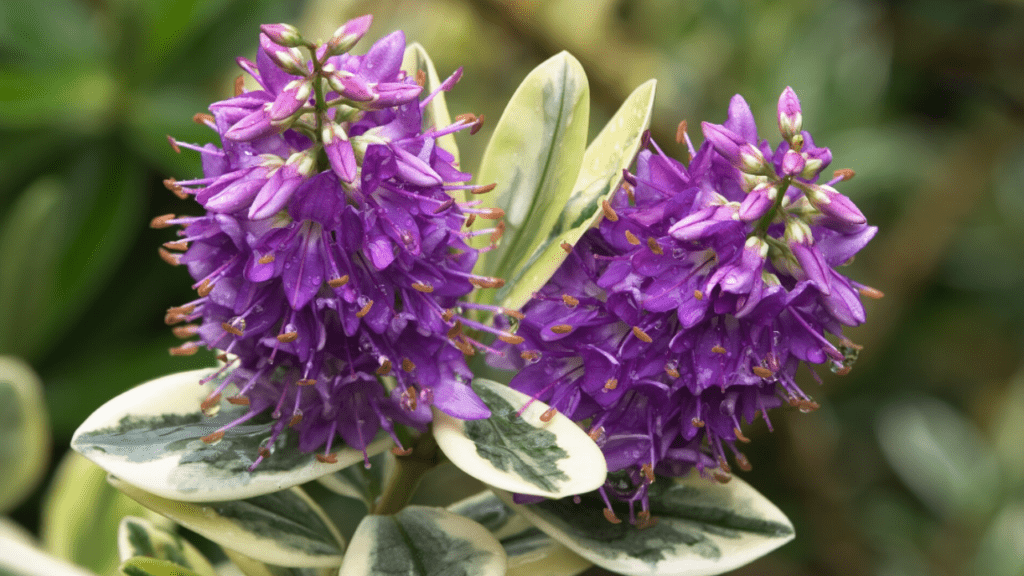
Hebe Plant Care: How to Grow and Maintain Vibrant Shrubs
Hebe plants are a beautiful addition to any garden, but they do require specific care and maintenance to thrive. In this post, we will provide a comprehensive guide on how to grow and maintain vibrant Hebe shrubs. Whether you’re a seasoned gardener or just starting out, this article will give you the information you need to keep your Hebe plants healthy and vibrant. From planting to pruning, we’ll cover it all in this detailed guide. So let’s dive in and learn how to care for Hebe plants!
Table of Contents
ToggleUnderstanding the Hebe Plant
Overview of Hebe Plants
Hebe plants are a popular choice for gardeners looking to add vibrant color and texture to their landscape. These evergreen shrubs are known for their beautiful flowers and foliage, making them a great choice for borders, containers, or as a focal point in the garden. Hebe plants come in a variety of sizes and colors, with different varieties offering unique characteristics such as variegated foliage or striking flower colors.
When it comes to caring for Hebe plants, it’s important to provide them with the right growing conditions. This includes well-draining soil, plenty of sunlight, and regular watering. Pruning and shaping the plants is also important to encourage healthy growth and prevent them from becoming too leggy.
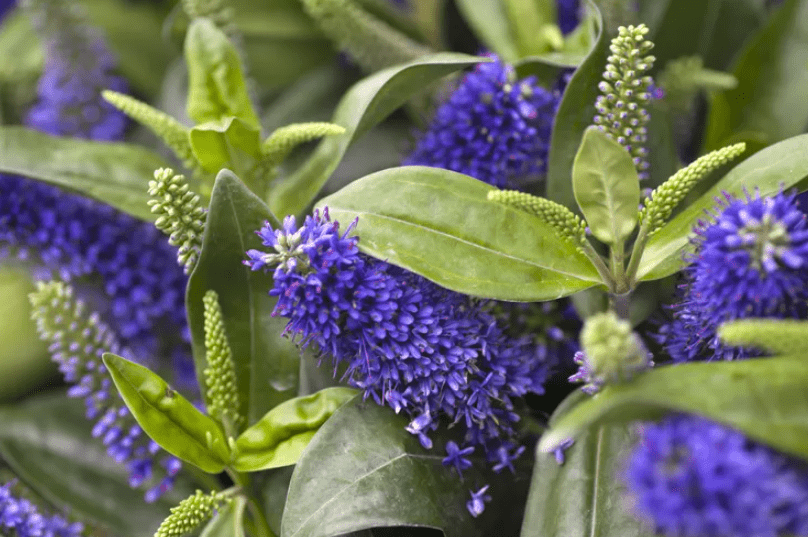
Overall, Hebe plants are a relatively low-maintenance option for gardeners, making them a great choice for adding beauty and interest to any outdoor space. With the right care and attention, Hebe plants can thrive and provide years of enjoyment for gardeners and visitors alike.
Planting Hebe Shrubs
Choosing the Right Location
When planting Hebe shrubs, it’s important to choose the right location for them to thrive. Hebe plants prefer well-draining soil and plenty of sunlight, so be sure to plant them in a spot that receives full sun or partial shade. It’s also important to consider the size of the Hebe variety you have and choose a location that allows for their growth without becoming overcrowded. Additionally, make sure to provide regular watering to keep the soil consistently moist but not waterlogged. Proper care and attention to the growing conditions will ensure that Hebe plants can thrive and add beauty to your garden for years to come.
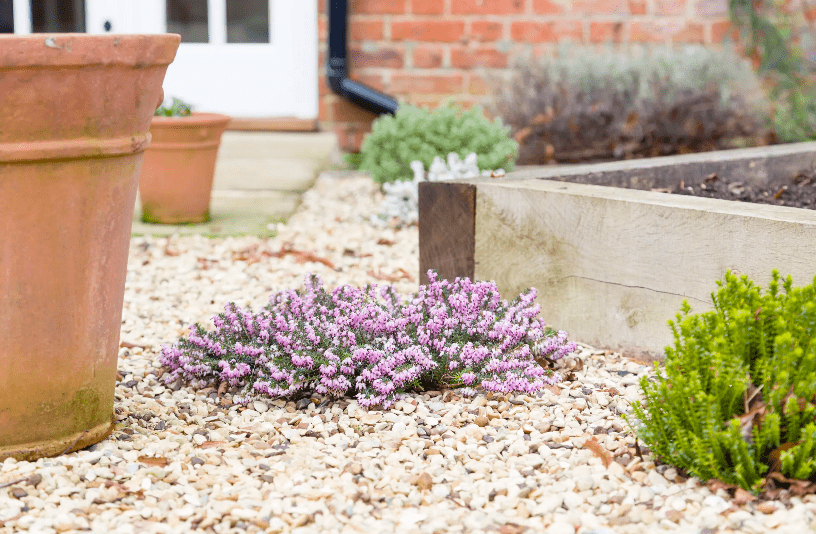
Planting Steps
Step-by-step guide to planting Hebe shrubs, including spacing and depth considerations.
Planting Hebe shrubs is a relatively straightforward process, but it’s important to follow a few key steps to ensure their success in your garden. Here’s a step-by-step guide to planting Hebe shrubs:
- Choose the right location: Select a spot in your garden that receives full sun or partial shade and has well-draining soil. Consider the size of the Hebe variety you have and allow for enough space for their growth without becoming overcrowded.
- Prepare the soil: Before planting, prepare the soil by removing any weeds, rocks, or debris. Work in some organic matter, such as compost or peat moss, to improve soil quality and drainage.
- Dig the hole: Dig a hole that is about twice the width of the Hebe’s root ball and just as deep. This will give the roots plenty of room to establish themselves.
- Plant the Hebe: Gently remove the Hebe shrub from its container and place it in the center of the hole. The top of the root ball should be level with the surrounding soil. Backfill the hole with soil and water the plant thoroughly to help settle the soil.
- Mulch and water: Apply a layer of mulch around the base of the plant to help retain moisture and suppress weeds. Water the Hebe thoroughly after planting and continue to water regularly, especially during dry periods.
By following these steps and providing the right growing conditions, your Hebe shrubs should thrive and provide years of beauty and enjoyment in your garden. Keep an eye on them for any signs of pests or diseases and address any issues promptly to ensure their ongoing health and vitality.
Ongoing Hebe Plant Care
Watering Requirements
How to water Hebe plants effectively, including frequency and amount.
Hebe plants should be watered thoroughly after planting and continue to be watered regularly, especially during dry periods. It’s important to provide enough water to keep the soil consistently moist, but not waterlogged. Applying a layer of mulch around the base of the plant can help retain moisture and suppress weeds. Keep an eye on the soil and adjust your watering frequency and amount as needed based on the weather conditions and the moisture level of the soil. By providing the right amount of water and creating the right growing conditions, your Hebe plants should thrive and provide years of beauty in your garden.
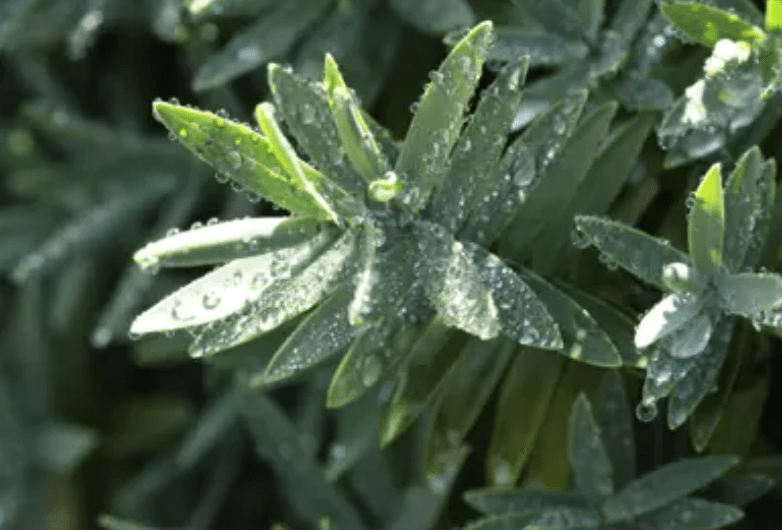
Fertilization
Is an important aspect of caring for Hebe plants. It is important to feed them with a balanced fertilizer to ensure their health and vitality. You should fertilize your Hebe plants in the spring and early summer to encourage healthy growth and flowering. Use a slow-release granular fertilizer that is specifically formulated for shrubs and apply it according to the manufacturer’s instructions. Avoid over-fertilizing, as this can lead to excessive growth and reduced flowering. It’s also important to keep an eye on the plants for any signs of pests or diseases and address any issues promptly to ensure their ongoing health and vitality. With the right care and attention, your Hebe plants will thrive and add beauty to your garden for years to come.
Pruning and Trimming
Are essential for maintaining the health and appearance of Hebe plants. Regular pruning helps to remove dead or diseased branches, promote new growth, and maintain the shape and size of the plant. It’s best to prune Hebe plants in the late spring or early summer after they have finished flowering. Use clean, sharp pruning shears to make clean cuts and remove any damaged or overgrown branches. Additionally, you can trim the plant to maintain its desired shape and size. When pruning, be sure to make cuts at a 45-degree angle just above a leaf node to encourage new growth. It’s important to also remove any crossing or overcrowded branches to improve air circulation and reduce the risk of disease. By regularly pruning and trimming your Hebe plants, you can help them to stay healthy, vigorous, and looking their best.
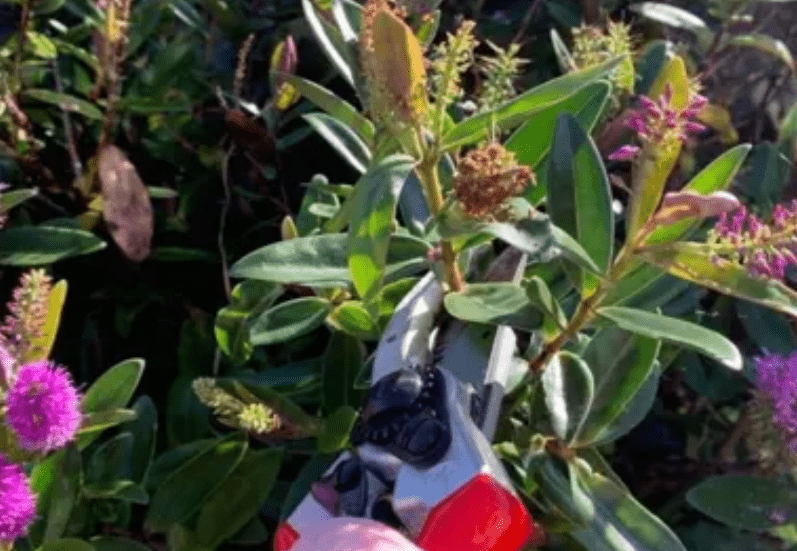
Mulching and Weed Control
Are important aspects of maintaining a healthy and attractive garden. Mulching helps to conserve moisture, control weeds, and improve the soil structure. It also provides insulation for plant roots and can enhance the overall appearance of the garden. When applying mulch, be sure to spread it evenly around the base of plants, leaving a small gap around the stem to prevent rot. Organic mulches, such as wood chips or straw, can also add nutrients to the soil as they decompose. In addition to mulching, weed control is essential for keeping your garden looking neat and preventing weeds from competing with your plants for water and nutrients. Regularly pulling or hoeing weeds, using landscape fabric, or applying mulch can help to keep weeds at bay. It’s important to keep up with these maintenance tasks to ensure your garden remains healthy and beautiful.
Propagating Hebe Plants
Propagation by Cuttings
Is a great way to create new plants from an existing Hebe plant. To propagate Hebe plants by cuttings, start by taking a cutting from a healthy, established plant. Use a sharp, clean pair of pruning shears to take a 4-6 inch cutting from the tip of a healthy, non-flowering stem. Remove the lower leaves from the cutting and dip the cut end in a rooting hormone to encourage root development. Then, plant the cutting in a well-draining potting mix and keep it moist until roots develop.
Once the cutting has developed roots, you can transplant it into a larger pot or directly into the garden. It’s important to keep the new plant well-watered and protected from extreme temperatures as it establishes itself in its new environment. With proper care, the new Hebe plant will grow and thrive, adding beauty to your garden.
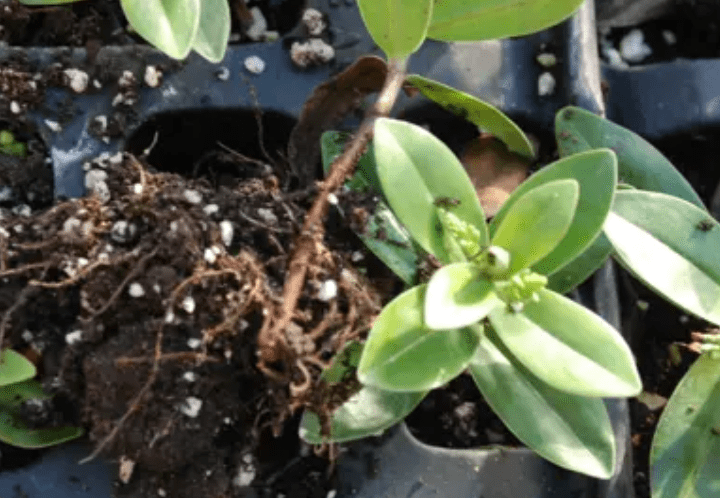
Overall, propagation by cuttings is a simple and effective way to create new Hebe plants and expand your garden. With the right technique and care, you can enjoy the satisfaction of growing new plants from cuttings and watching them flourish in your garden.
Division and Layering
Are two common methods of plant propagation that can help you expand your garden and create new plants. When using the division method, you can simply divide an existing plant into smaller sections, each with its own roots, and transplant them into new locations. This is a great way to create multiple plants from a single one, and it’s particularly effective with plants that have clumping or spreading growth habits. Layering, on the other hand, involves encouraging a stem to produce roots while still attached to the parent plant, and then transplanting the newly rooted section. This method is often used with plants that have low-growing, flexible stems that can be easily bent and covered with soil. Both division and layering can be effective ways to create new plants and expand your garden without having to purchase additional specimens. They also allow you to propagate plants that you already have and love, ensuring that you can continue enjoying their beauty in different areas of your garden. By using these methods, you can create a more diverse, lush garden without having to spend a lot of money on new plants.
Common Issues and Solutions
Pests and Diseases
Overview of common pests that affect Hebe plants (e.g., aphids, scale insects).
Hebe plants are susceptible to a few common pests, including aphids and scale insects. Aphids are small, soft-bodied insects that feed on the sap of plants, causing damage to the leaves and stems. They can be controlled with insecticidal soap or neem oil. Scale insects, on the other hand, are small, immobile pests that attach themselves to the stems and leaves of plants, draining the plant’s nutrients. They can be removed by scraping them off with a brush or by using horticultural oil. It’s important to regularly inspect your Hebe plants for signs of pests and take appropriate measures to control them to keep your plants healthy and thriving.
Effective pest control methods, including organic options.
When dealing with pests and diseases that affect Hebe plants, it’s important to be aware of common issues and their solutions. One common pest that affects Hebe plants is aphids, which are small, soft-bodied insects that feed on the sap of plants, causing damage to the leaves and stems. To control aphids, you can use insecticidal soap or neem oil, which are effective organic options for pest control. Another common pest is scale insects, which are small, immobile pests that attach themselves to the stems and leaves of plants, draining the plant’s nutrients. You can remove scale insects by scraping them off with a brush or by using horticultural oil. Regularly inspecting your Hebe plants for signs of pests and taking appropriate measures to control them is essential for keeping your plants healthy and thriving. It’s important to consider using effective pest control methods, including organic options, to maintain the health of your Hebe plants.
Common diseases (e.g., root rot, powdery mildew) and how to treat them.
Hebe plants are susceptible to a few common diseases, including root rot and powdery mildew. Root rot is caused by overwatering and poorly drained soil, leading to the roots becoming waterlogged and oxygen-deprived. To treat root rot, it’s important to improve the soil drainage and reduce watering frequency. Removing any affected roots and repotting the plant into fresh, well-draining soil can help to save the plant.
Powdery mildew is a fungal disease that appears as a white powdery substance on the leaves. It thrives in humid conditions and can spread rapidly. To treat powdery mildew, it’s important to increase air circulation around the plant and avoid overhead watering. Applying a fungicidal spray or a homemade solution of baking soda and water can also help to control the spread of powdery mildew.
It’s important to regularly monitor Hebe plants for signs of diseases and take prompt action to address any issues. Proper plant care, including avoiding overwatering and providing good air circulation, can help to prevent diseases from affecting your Hebe plants. Additionally, using organic and natural remedies for pest and disease control can help to maintain the health and vitality of your Hebe plants.
Seasonal Hebe Plant Care
Winter Care
During the winter months, it’s important to take extra care of your Hebe plants to ensure they remain healthy and vibrant. One common issue that can arise during winter is powdery mildew, a fungal disease that appears as a white powdery substance on the leaves. To prevent and treat powdery mildew, it’s important to increase air circulation around the plants and avoid overhead watering. You can also apply a fungicidal spray or a homemade solution of baking soda and water to control the spread of the disease.
In addition to addressing specific diseases, it’s important to regularly monitor your Hebe plants for any signs of issues and take prompt action to address them. Proper plant care, such as avoiding overwatering and providing good air circulation, can also help prevent diseases from affecting your Hebe plants.
Using organic and natural remedies for pest and disease control can also help maintain the health and vitality of your Hebe plants. By taking proactive steps to care for your plants during the winter months, you can ensure they stay strong and resilient throughout the season.
Summer Care
Is essential for maintaining the health and vitality of your plants. One common issue that can arise during summer is powdery mildew, a fungal disease that appears as a white powdery substance on the leaves. To prevent and treat powdery mildew, it’s important to increase air circulation around the plants and avoid overhead watering. You can also apply a fungicidal spray or a homemade solution of baking soda and water to control the spread of the disease. In addition to addressing specific diseases, it’s important to regularly monitor your plants for any signs of issues and take prompt action to address them.
Proper plant care, such as avoiding overwatering and providing good air circulation, can also help prevent diseases from affecting your plants. Using organic and natural remedies for pest and disease control can also help maintain the health and vitality of your plants. By taking proactive steps to care for your plants during the summer months, you can ensure they stay strong and resilient throughout the season. It’s important to provide the right amount of water, sunlight, and nutrients to your plants during the summer to help them thrive. With proper care and attention, your plants can flourish and add beauty to your outdoor space.
Conclusion
In conclusion, caring for Hebe plants involves regular watering, well-drained soil, and proper pruning to maintain vibrant shrubs. It’s important to provide the right amount of sunlight and protect the plants from extreme weather conditions. With the right care and attention, you can enjoy beautiful and healthy Hebe plants in your garden. If you want to learn more about specific care tips and tricks for Hebe plants, check out our upcoming webinar on Hebe plant care. It’s a great opportunity to expand your knowledge and become a successful Hebe plant gardener.
Frequently asked questions And Answer
Hebe plants thrive in well-drained soil and prefer full sun to partial shade. They also prefer a slightly acidic to neutral pH level in the soil.
Hebe plants should be watered regularly, especially during dry periods. However, it’s important to avoid overwatering, as this can lead to root rot.
Yes, regular pruning is beneficial for Hebe plants to maintain their shape and encourage new growth. It’s best to prune them after flowering to avoid cutting off any potential blooms.
Hebe plants are generally resistant to pests and diseases, but they can occasionally be affected by aphids, spider mites, or powdery mildew. Regular inspection and proper care can help prevent these issues.
Yes, Hebe plants can be grown in containers as long as they have good drainage. Use a high-quality potting mix and ensure the container has drainage holes to prevent waterlogging.
Hebe plants benefit from a balanced, slow-release fertilizer applied in the spring. Avoid over-fertilizing, as this can lead to excessive foliage growth at the expense of flowers.
To encourage abundant flowering, ensure that the plants receive adequate sunlight and water. Pruning after flowering and providing proper nutrition can also help promote prolific blooms.
In colder climates, Hebe plants may benefit from a layer of mulch to protect their roots from freezing temperatures. It’s also important to avoid excessive moisture during the winter months to prevent root rot.
